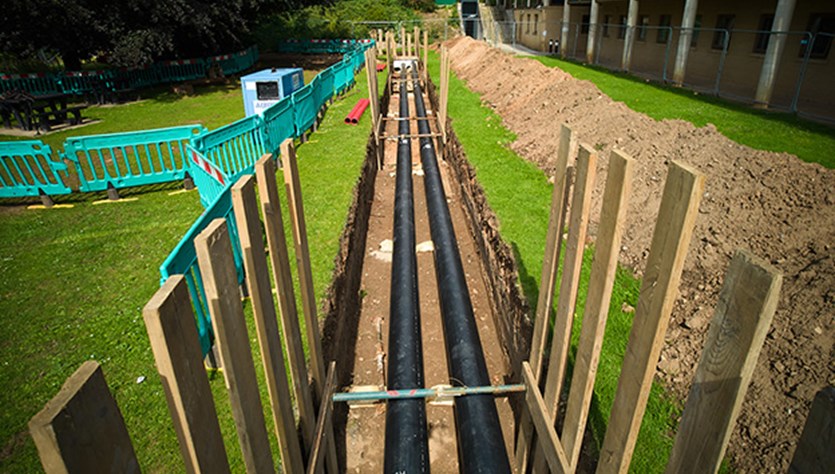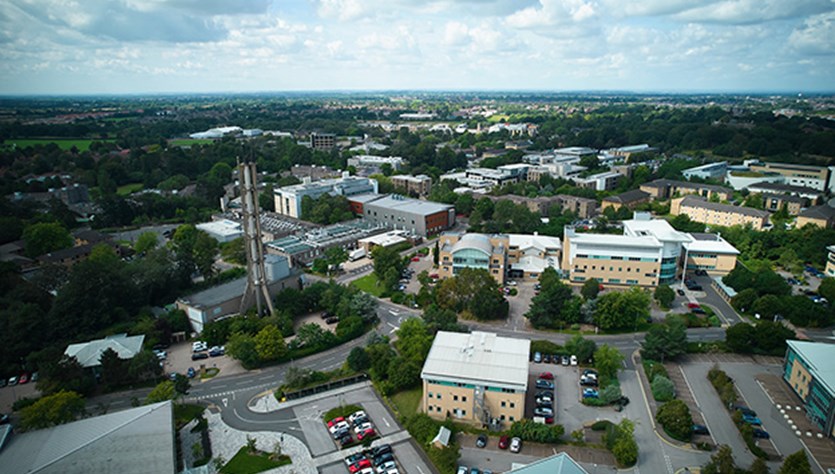Operations Manager Richard Marchant explains how we’re helping some of the UK’s largest universities revolutionise their energy infrastructure, while keeping inconvenience for staff and students to an absolute minimum.

Segregated working areas provide an opportunity to create a safe space between the installation and members of the public.
Use your pre-construction period wisely
The pre-construction phase is more than just scheduling, it’s a chance to build relationships, learn the university’s routines, and design a project that respects campus life. By meeting with building managers, curriculum leads, and estates staff, we learn about busy periods, sensitive locations, and special equipment needs. Walking planned heating routes with university staff helps us understand the impact on access, fire escapes, and everyday services like bin collections.
A Quiet Place
Safeguarding study, learning and exams is a core objective for everyone involved. We can work with university to create designated quiet zones which avoid noisy work at certain times.
As standard, our teams work 8am-5pm term time and we deploy noisier equipment, such as angle grinders, away from residences and study zones wherever possible.
Timing is Everything
We pioneered the approach of delivering district heating in zones. This not only maintains project momentum but also allows us to pivot, pausing work in one area and progressing in another when campus events demand attention and silence, such as graduations. Flexibility is the key to minimising disruption.

Not only are no two campuses alike, individual buildings are used in varying ways, so let the client educate you on how they use their campus.
Don’t Forget the Students!
I can’t over state how important communication is. Your comms plan shouldn’t be limited to showing what’s happening, it should also show why! Over 80% of students express strong support for sustainability initiatives, so seize every opportunity to share the benefits. Make sure they understand the carbon reductions, future cost savings and improvements to air quality.
If you can create a sense of pride and ownership then you can transform uninformed objections into informed, engaged support.
Embrace the Feedback and Learn Your Lessons Well
Maps and plans are only part of the story. The lived experience of the campus community is irreplaceable. Open consultations, drop-in sessions, and stakeholder mapping help us to understand real concerns and gather practical solutions from those who know the university best.
By embedding flexibility, empathy, and clear communication at every stage, we believe that decarbonising university campuses can be achieved without impacting what makes these institutions special. Through partnership and careful planning, disruption becomes not an obstacle but a challenge we can manage. We are proving that a greener future does not have to come at the cost of university life.